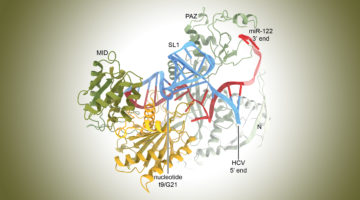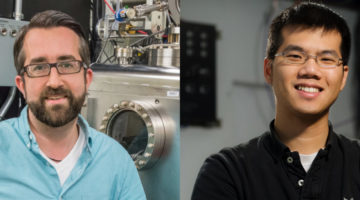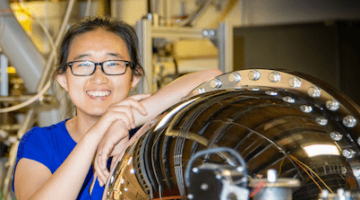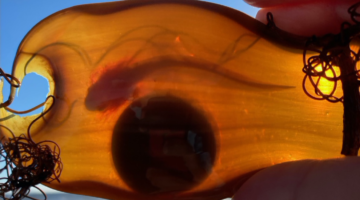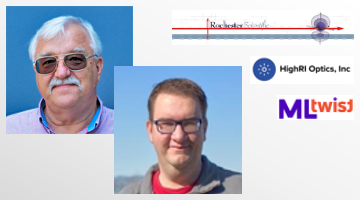On February 25, the Lab hosted Speaker of the House Nancy Pelosi, Rep. Barbara Lee, Rep. Doris Matsui, UC President Michael Drake, and Intel CEO Patrick Gelsinger. Lab leaders and researchers shared ways the ALS propels research in the fields of clean energy, microelectronics, human health, and more. Read more »
Molecular Hijacking of a MicroRNA by the Hepatitis C Virus
The hepatitis C virus (HCV), which attacks the liver, is known to repurpose host-cell components known as microRNAs—short RNA strands that act to silence gene expression. Now, the molecular structure of an HCV site bound to a microRNA complex revealed how their interactions shield the virus from the host cell’s protective response. Read more »
A Brighter Future for Stretchable Electronics
By continuously monitoring physiological signals, wearable “stick-on” sensors not only help people stay healthy, they can also provide early warning of potential health problems. At the ALS, researchers studied the morphology of such a sensor’s active material, which is key to controlling and optimizing its structure and performance. Read more »
How X-Rays Can Make Better Batteries
In order to help our nation meet its goal of net-zero carbon emissions by 2050, scientists like William Chueh and David Shapiro are working together to come up with new strategies to design safer, long-distance batteries made from sustainable, Earth-abundant materials. They discuss their pioneering work in this Q&A. Read more »
2022 Update from ALS Director Steve Kevan
After a roller-coaster two years, Steve Kevan is happy to report that the ALS is emerging from the pandemic, perhaps a little battered but certainly not broken. He invites the community to look to the near- and long-term future of the ALS. Read more »
Ming Yi, Users’ Executive Committee Chair
From superconductors to snowboarding, Ming Yi sees the beauty of physics everywhere. She loves the sense of community in the synchrotron world and hopes users and staff will share their input with the Users’ Executive Committee. Read more »
Rapid 3D Visualization of Lung Cells Altered by SARS-CoV-2
In this work, researchers illustrated the potential of soft x-ray tomography to rapidly characterize and quantify the structural changes induced in cells infected by SARS-CoV-2, revealing profound alterations of the subcellular architecture induced by viral infection over time. Read more »
How Shark Egg Cases Balance Toughness and Permeability
Also known as “mermaid’s purses,” shark egg cases are both tough and permeable—two opposing characteristics that are necessary for the embryo’s survival. X-ray scattering at the ALS and electron microscopy helped explain how the material’s nanoarchitecture contributes to its toughness, informing future development of high-performance synthetic materials. Read more »
ALS Scientists to Collaborate on Three DOE Small Business Awards
Three Bay Area companies have been awarded DOE Phase I small business grants to collaborate with ALS scientists to conduct R&D. Rochester Scientific and HighRi Optics will work with Valeriy Yashchuk and MLtwist will work with Alex Hexemer. Read more »
Reshaping the World of Research Through Remote Experimentation
At a time when the need was greater than ever, seven user research facilities formed a team of experts, the Remote Access Working Group (RAWG), to figure out how their institutions could keep the science going even when the researchers couldn’t access them in person. Read more »
- « Previous Page
- 1
- …
- 13
- 14
- 15
- 16
- 17
- …
- 28
- Next Page »

